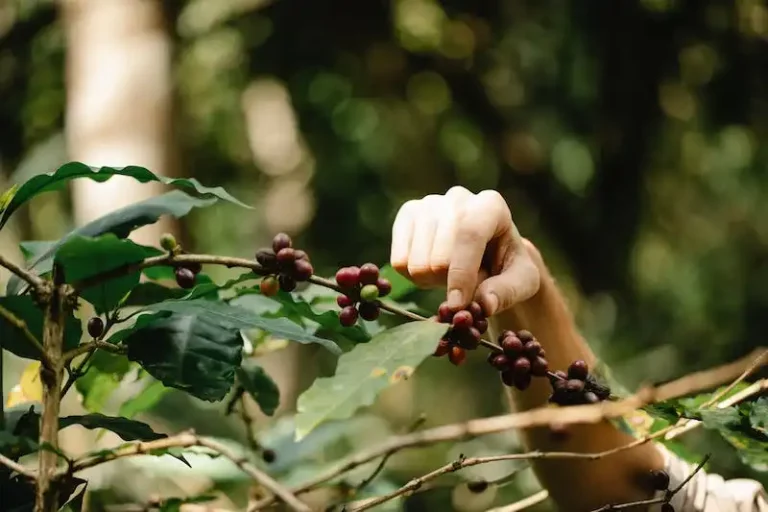The smoke bush, also considered as smoke tree, is a gorgeous plant known for its unique qualities. With its smoky appearance and bushy habit, the smoke bush adds a touch of beauty to any garden or landscape. Pruning and propagation methods vary depending on the desired form and purpose.
Originally from the southern regions of Europe, the smoke bush is commonly used in borders and as an accent plant in gardens. While it is a relatively low-maintenance plant, there are some basic trimming practices to keep in mind. Pruning should be done carefully, however, as excessive cutting can result in less flowering.
When it comes to propagation, the smoke bush can be propagated through traditional methods such as layering and stem cuttings. Instructions should be followed thoroughly to ensure successful propagation. Careful attention should also be given to the growing conditions to promote proper growth and blooming.
In terms of varieties, there are several different types of smoke bushes to choose from. Some popular varieties include the Royal Purple, Old Fashioned, and Golden Spirit. Each variety has its own unique characteristics, such as the color of its flowers and foliage.
“The smoke bush is a versatile plant that can be used as a focal point in the garden or as a background plant in larger landscapes,” says gardening expert Helga_Foto. “With their beautiful panicles of puffy flowers, these trees add interest and charm to any space.”
One important aspect of smoke bush care is proper fertilizing. While the smoke bush does not require excessive fertilization, it may benefit from some extra nutrients during the growing season. Fertilizing should be done in late winter or early spring to promote healthy growth.
Pests and diseases are often not a major concern for smoke bushes, but they can be susceptible to root rot and branch dieback if not properly cared for. Regular inspections and removing any infected branches or roots can help prevent these issues. It is also important to always choose healthy plants when purchasing smoke bushes for your garden.
In conclusion, smoke bushes are a beautiful addition to any garden. Whether they are grown for their stunning blooms or their unique smoky appearance, these plants bring a touch of elegance to any landscape. With proper pruning, propagation, and care, your smoke bush can thrive for many years to come.
How to Prune Smoke Bush
Pruning smoke bushes is a matter of personal preference and depends on the desired effect you want to achieve in your garden. These bushy and colorful plants can be used as focal points, borders, or hedges, making them versatile options for landscapes.
When it comes to pruning smoke bushes, the first step is to choose the right time. The best time to prune smoke bushes is in late winter or early spring while they are still dormant. This allows the bush to recover and grow new shoots in time for the flowering season. It is important to avoid pruning during the hotter months in summer as this can stress the bush and inhibit its growth.
The pruning instructions for smoke bushes involve removing the larger branches and crossing branches to maintain a well-shaped bush. Start by cutting back one-third of the oldest branches to the ground to stimulate new growth. This process encourages rejuvenation and keeps the bush looking vibrant and healthy. Remove any dead or diseased branches to prevent the spread of infections.
When pruning smoke bushes, it is essential to maintain a balanced and symmetrical shape. This can be achieved by trimming the bushes to the desired height and width while maintaining a natural habit. Prune the branches just above a leaf node or bud to encourage new growth.
Another important aspect of pruning smoke bushes is removing the suckers that grow from the base. Suckers are shoots that emerge from the roots and can take away nutrients and moisture from the main bush. By removing these suckers, you ensure that the main bush receives all the necessary resources for healthy growth.
After pruning, it is recommended to fertilize the smoke bush with a balanced fertilizer to promote growth and flowering. Water the bushes thoroughly after fertilizing to help the nutrients penetrate the soil and reach the roots.
Smoke bushes can be propagated through cuttings, making it easy to create new plants. Take a cutting from a healthy branch and remove the lower leaves. Dip the end of the cutting in a rooting hormone and plant it in a pot with well-draining soil. Place the pot in a warm and bright location, and keep the soil moist. In a few weeks, the cutting should develop roots, and you can transplant it to a larger container or directly into the garden.
Smoke bushes come in different types and colors, including dark purple, burgundy, and golden varieties. Choose the color that suits your garden aesthetic and matches well with the other plants and trees in the area. Some popular smoke bush varieties include Cotinus coggygria ‘Royal Purple,’ Cotinus coggygria ‘Golden Spirit,’ and Cotinus coggygria ‘Grace.’
In addition to their stunning color and flowering panicles, smoke bushes also have attractive bark. The bark is a combination of gray, brown, and silver hues, adding visual interest to the bush even when it is not in bloom.
The smoke bush is a versatile and low-maintenance plant that can be pruned to fit various uses in the garden. Whether you want a larger, bushier smoke bush or a more compact and trimmed appearance, pruning is an essential part of maintaining the health and aesthetic appeal of this beautiful plant. By following proper pruning techniques and timing, you can enjoy the beauty of smoke bushes in your garden for many years to come.
There are two options when it comes to cutting back this colorful shrub
When it’s time to prune your smoke bush, there are two main options you can consider. The first option is to cut back the entire shrub to the ground. This method is known as rejuvenation pruning and it can be a great way to keep your smoke bush in check and encourage new growth.
The second option is to selectively prune the smoke bush by removing specific limbs or branches. This method is often preferred if you want to maintain the shape and size of the shrub, while still controlling its growth. By carefully choosing which limbs to prune, you can create a more open and structured smoke bush that fits well in your landscape.
Regardless of the method you choose, it’s important to be careful when handling the smoke bush. Its leaves and bark are known to cause skin irritation in some individuals, so wearing gloves is recommended. Also, keep in mind that the smoke bush is considered poisonous if ingested, so it’s important to keep it away from children and pets.
Once you’ve decided on the pruning method, it’s time to think about propagation. Smoke bushes can be propagated through cuttings, but keep in mind that not all cuttings will successfully root. Using a standard rooting hormone can increase the chances of success. Alternatively, you can let the smoke bush produce fruits, which are small, purple puffs that contain seeds. By planting these seeds, you can grow new smoke bushes with the same characteristics as the parent plant.
Whether you choose to prune your smoke bush to the ground or selectively remove limbs, proper care and maintenance are key. Smoke bushes thrive in full sun and well-drained soil. They can tolerate a wide range of soil types, including acidic soils. So if you’re looking to add a colorful and vibrant shrub to your landscape, the smoke bush is definitely worth considering.
Option 1
When it comes to smoke bush pruning, there are several options to consider. First, you can choose to allow the smoke bush to grow naturally without any pruning. This will result in a tall and wide plant with branches that spread out in all directions. The smoke bush can reach a height of up to 15 feet and a width of up to 12 feet, so make sure you have enough space for it to grow.
If you want a more compact smoke bush, you can prune it to control its height and spread. Pruning can be done in late winter or early spring, before the plant starts to leaf out. Remove any dead or damaged branches and thin out the plant to allow more light and air circulation. You can also prune for rejuvenation by cutting back old branches to promote new growth.
Another option is to choose a specific variety of smoke bush that has a more compact habit. There are several varieties available, with different characteristics such as flower color, leaf color, and resistance to deer browsing. Some popular varieties include ‘Royal Purple’, ‘Golden Spirit’, and ‘Velvet Cloak’.
When planting a smoke bush, choose a location that receives full sun to partial shade. The plant is adaptable to different soil types, but it prefers well-drained soil. It can tolerate drought conditions once established, but regular watering is necessary for the first few years. Smoke bushes are also tolerant of a wide range of soil pH levels.
Regardless of the pruning option you choose, smoke bushes are generally low-maintenance plants. They do not require a lot of attention once established, although they can benefit from occasional fertilization. Feed the plant with a balanced fertilizer in spring, following the label instructions.
Smoke bushes are known for their smoke-like appearance, which is due to the clusters of small flowers that appear in summer. The flowers can be cream, pink, or purple in color, depending on the variety. The flowers are followed by small, ornamental fruits that can persist into winter.
It is important to note that all parts of the smoke bush are poisonous if ingested, so it should be planted in an area where children and pets cannot reach. Also, the smoke bush has colorful branches and interesting bark, making it an attractive addition to any landscape.
 |
 |



